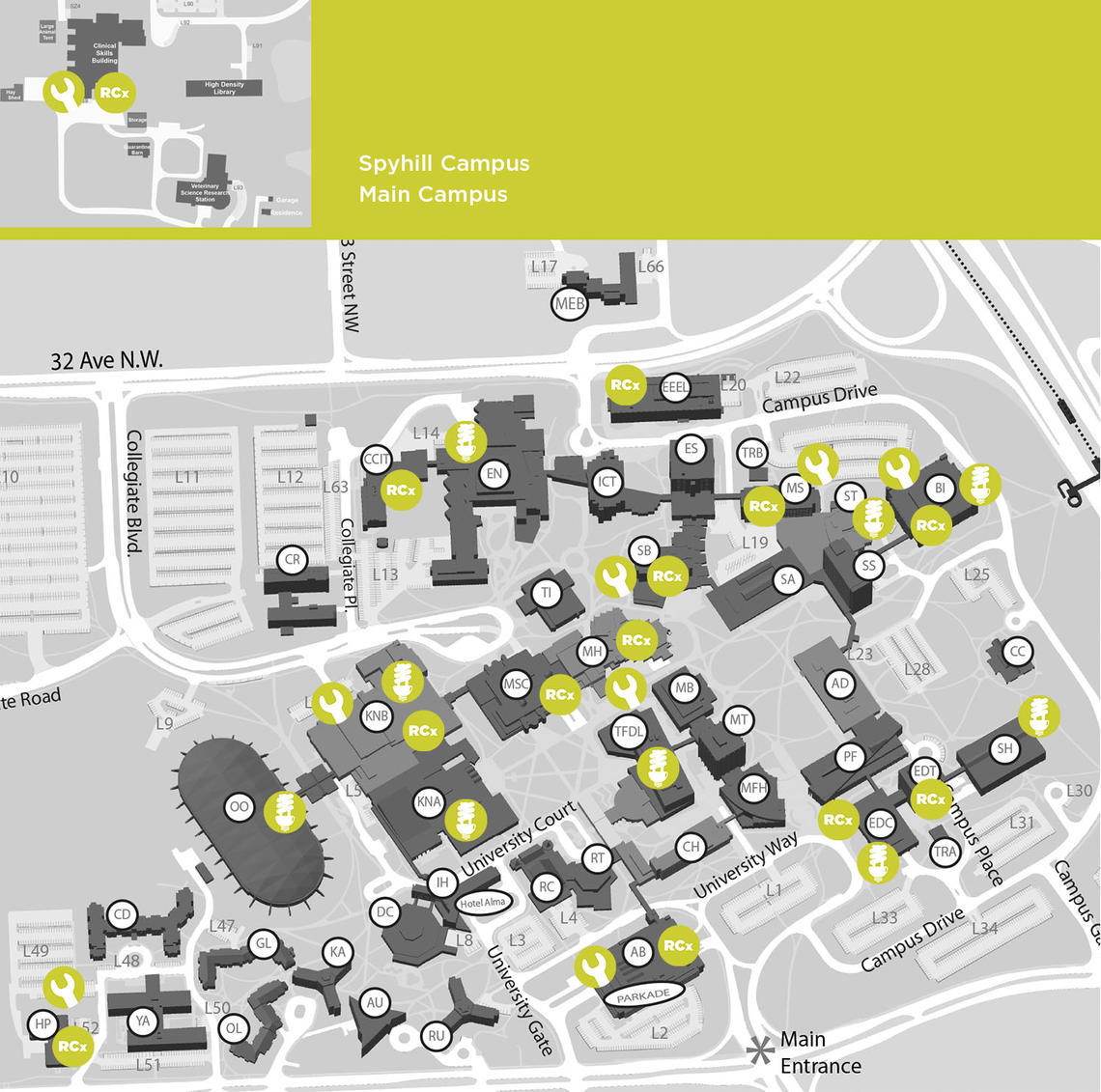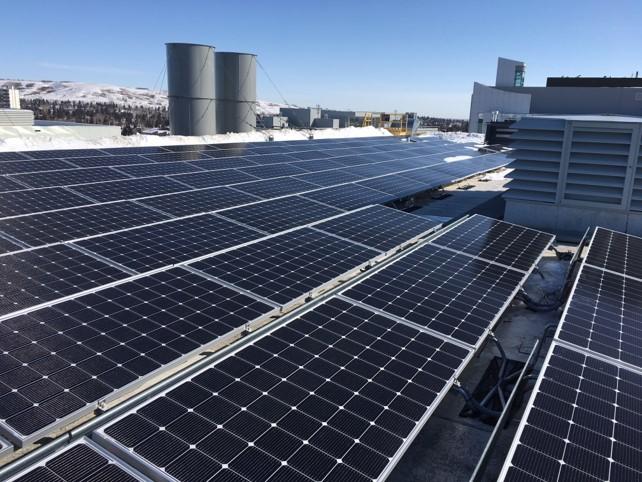
Utility Reduction Program projects have touched almost every area on campus.
Nov. 22, 2018

Utility Reduction Program projects have touched almost every area on campus.
It takes a lot of energy to run the dozens of buildings across all the University of Calgary campuses, and not surprisingly, 99 per cent of the university’s greenhouse gas (GHG) emissions come from operating our buildings. UCalgary’s Utility Reduction Program (URPr) is a key initiative in reducing the impact our building operations have on the environment, our institutional GHG emissions and operating costs across the university.
In fact, URPr has contributed to UCalgary reaching Canada’s target to reduce GHGs by 30 per cent by 2030; a decade ahead of time, UCalgary has attained a GHG reduction of over 30 per cent across the institution since 2008.
Years One and Two of URPr encompassed 26 projects targeting 20 existing buildings on main campus. The projects included mechanical and building control upgrades, lighting retrofits to replace fluorescent tubes with LED lights, the installation of energy recovery systems and energy-friendly solar photovoltaic arrays, and other upgrades to allow older buildings to meet current needs by rethinking how our buildings operate.
In the Education Tower and Education Block, upgrades to lighting and building controls better meet the comfort demands of occupants. These upgrades alone have reduced emissions by 370 tonnes of GHGs per year, the same as taking about 80 passenger vehicles off the road.
Post-Secondary Institutions Strategic Investment Fund supports improvements to research and learning spaces
URPr’s second year was supported by funding from the Post-Secondary Institutions Strategic Investment Fund (PSI-SIF), announced by the federal government in September 2016, and focused on improving the environmental sustainability and energy efficiency of the university’s research- and innovation-related infrastructure.
“By implementing energy efficiency measures and renewing aging technology in classrooms and laboratories, the PSI-SIF-funded URPr program resulted in approximately $650,000 in utility avoidance costs and reduced annual institutional GHG emissions by about 8,000 tonnes,” says Jay Campo, director, energy planning and innovation, Office of Sustainability.
Reducing GHG emissions by 8,000 tonnes is the equivalent of taking 1,700 passenger vehicles off the road, or comparable to the carbon intake of 38 square kilometres of forest.
The largest solar photovoltaic array on campus
While the URPr projects are making a big impact on GHG emission reductions, you won’t see most of them since the upgrades happen behind the scenes.
“Unless you happen to be on the roof of the Engineering G block in the Canadian Natural Resources Limited engineering complex, you won’t see the largest installation of solar photovoltaic (PV) panel arrays anywhere on campus,” says Campo. “But you can rest assured it’s there, and it’s generating green power to help operate the building.”
This 60 kilowatt (kW) array covers the entire roof of the Engineering G building. To put that in context, the average home’s solar array will typically be three to five kW. The Engineering G array is expected to generate 66,000 kWh per year, which is enough energy to power 10 Alberta homes. The energy generated goes back to help power the building, reducing the consumption of grid-purchased electricity by producing enough energy to power the equivalent of two air handling units.
Now, building operators are able to log in and monitor in real time what power it’s producing and can work with researchers and students in an experiential learning opportunity as a Campus as a Learning-Lab (CLL) project.
Energy comparisons calculated using https://www.epa.gov/energy/greenhouse-gas-equivalencies-calculator

A solar photovoltaic array installed on the roof of Engineering G.
University of Calgary